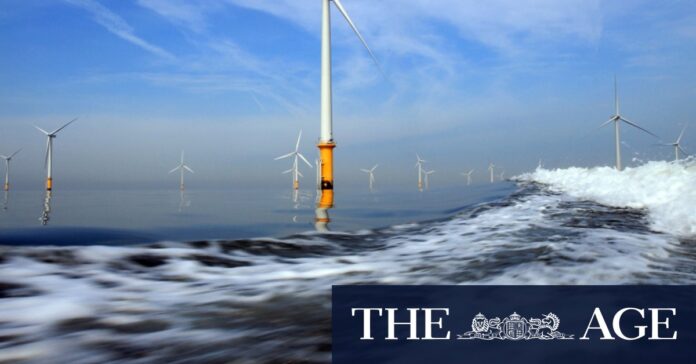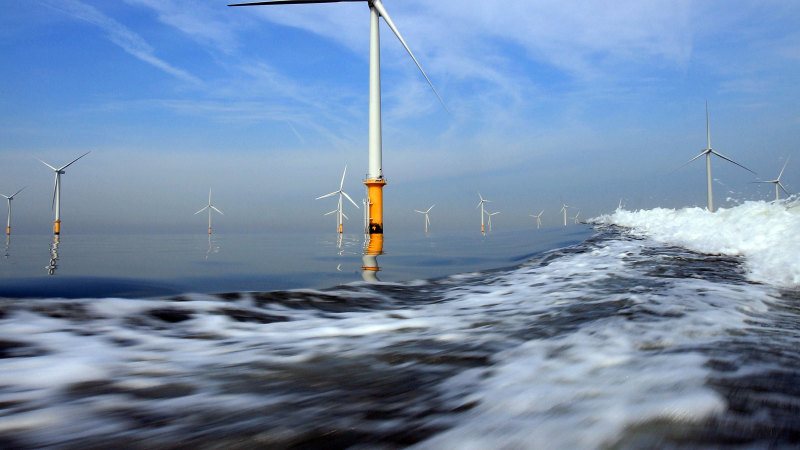[ad_1]
They must complete environmental surveys and seabed geophysical and geotechnical investigations, measure wind strength, design the wind farm and consult local communities before putting a single pole in the water, Carolyn Sanders, Flotation’s head of Australian operations, said.
“Offshore wind is proven, it’s ready to go now, has community and industry support in the region, and delivers both retention and creation of new ongoing jobs,” she said.
Loading
Sanders acknowledged her project’s turbines might be visible from the coast. “If it’s a bright clear day, you will see them in the distance,” she said. “But if it’s a hazy or overcast day, they kind of melt into the background.”
Flotation, owned by utilities giant Tokyo Electric Power Company, and a host of other renewables companies – among them Danish multinational Ørsted, Spanish wind giant Iberdrola and Macquarie Group’s Corio Generation – is waiting to hear if it is one of a handful of companies picked by the federal government to develop the 10-gigawatt Gippsland zone.
The decision to award about five feasibility licences is imminent.
A Department of Climate Change, Energy, the Environment and Water spokesperson said: “The government is carefully considering feasibility licence applications and will make assessments based on their merit for energy supply and the local industry. It is anticipated a decision on these applications will be made in the coming months.”
About 20 per cent of Victoria’s total power needs, about two gigawatts, is expected to come from offshore wind by 2032. That will double to four gigawatts by 2035 and up to nine gigawatts by 2040.
Seadragon and a proposed 2.2 gigawatt wind farm backed by Copenhagen Infrastructure partners and Australian superannuation fund Cbus, called Star of the South (which also has major project status), are the two most advanced offshore wind farms planned for the area.
The designated waters off Gippsland are considered world-class for untapped wind power as they have relatively shallow sea beds less than 60 metres deep that are suited to fixed turbines, with nearby port facilities in Hastings to service construction and ongoing operations.
[ad_2]
Source link



